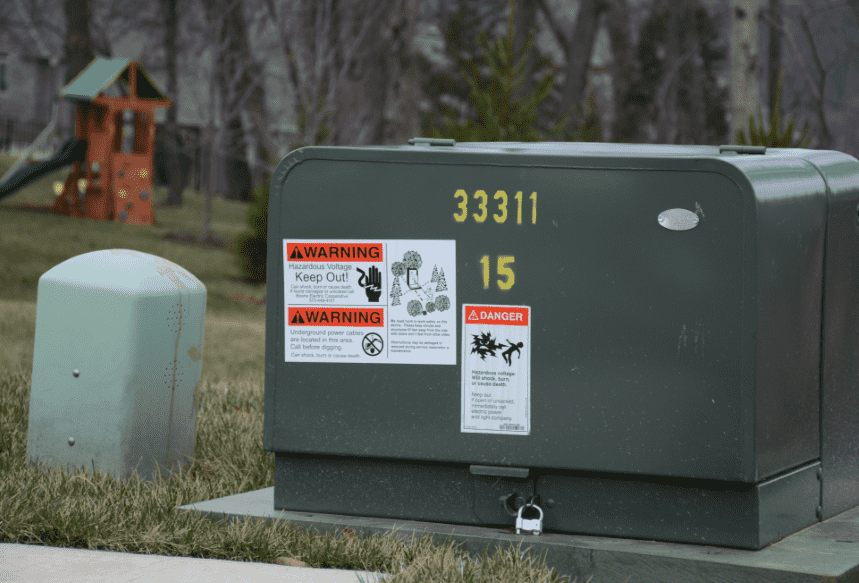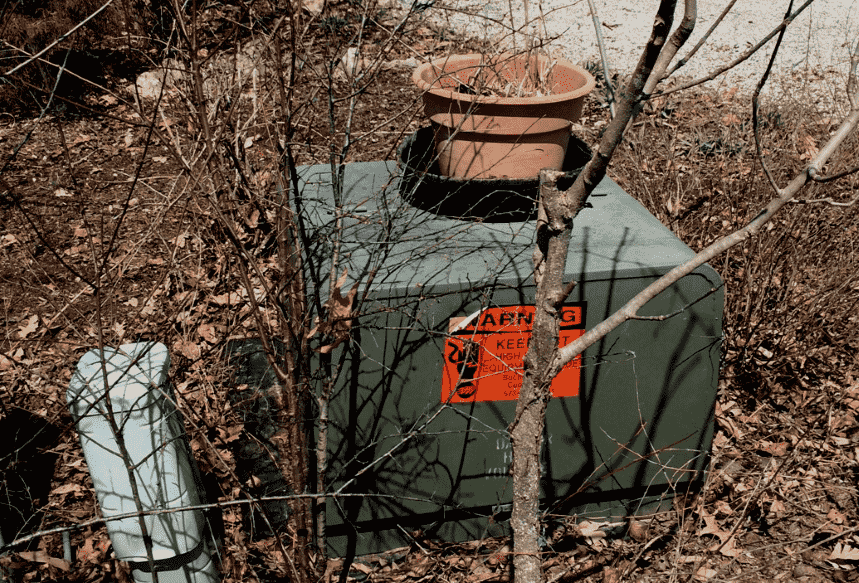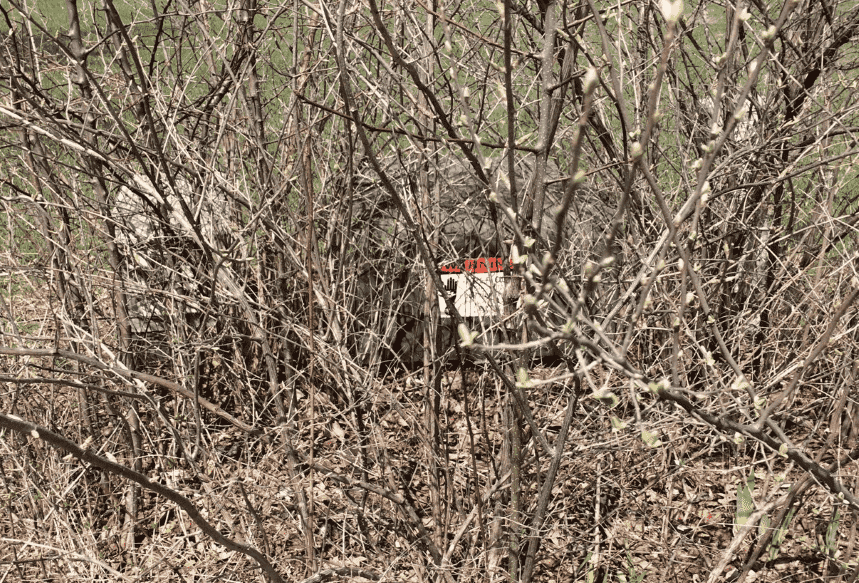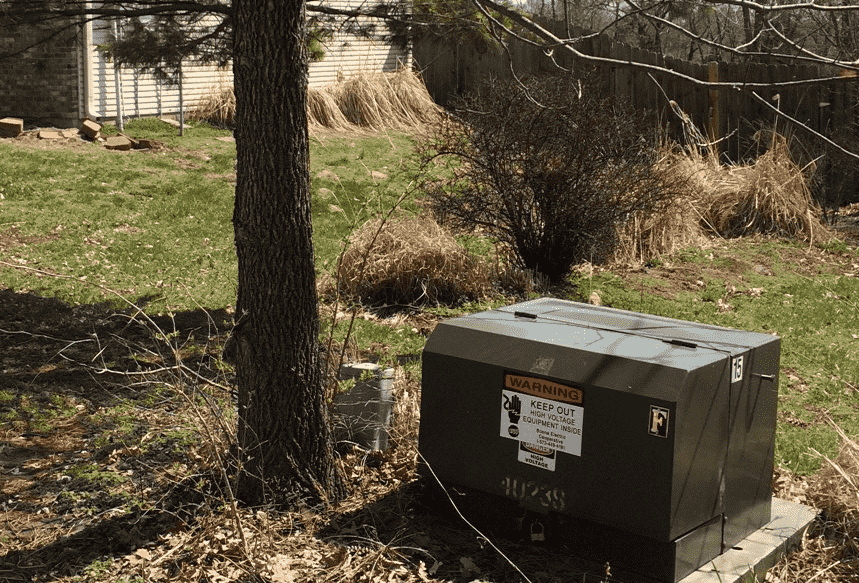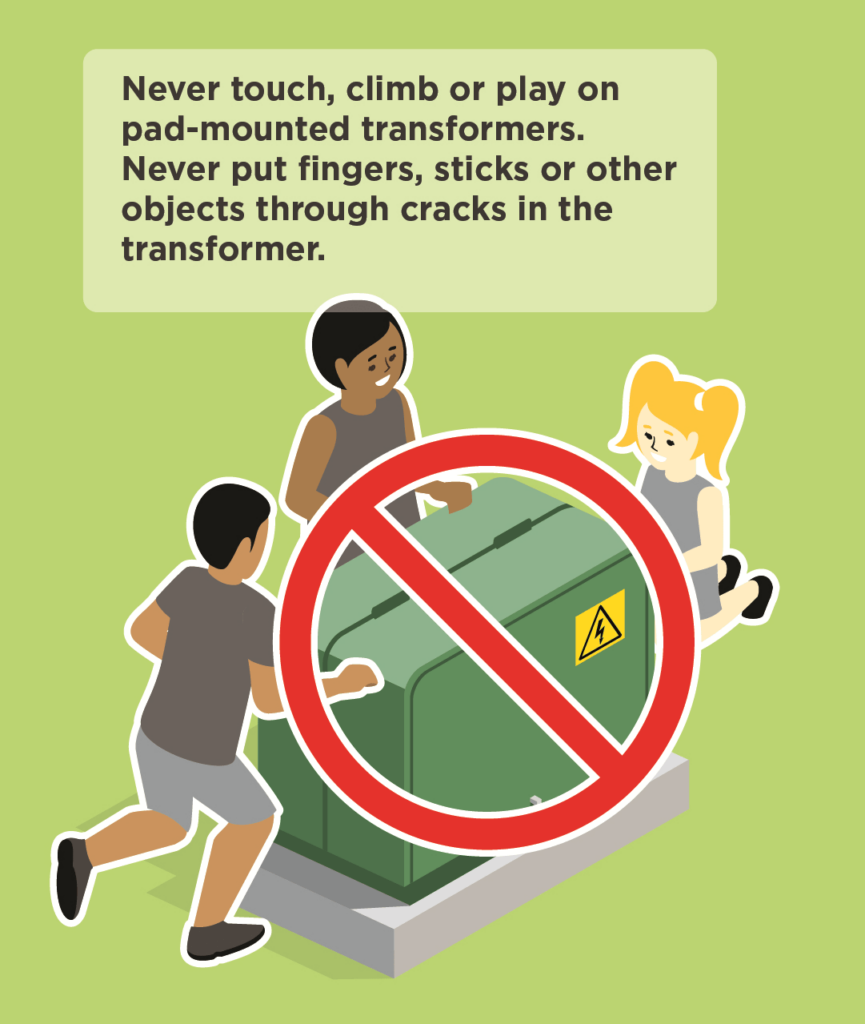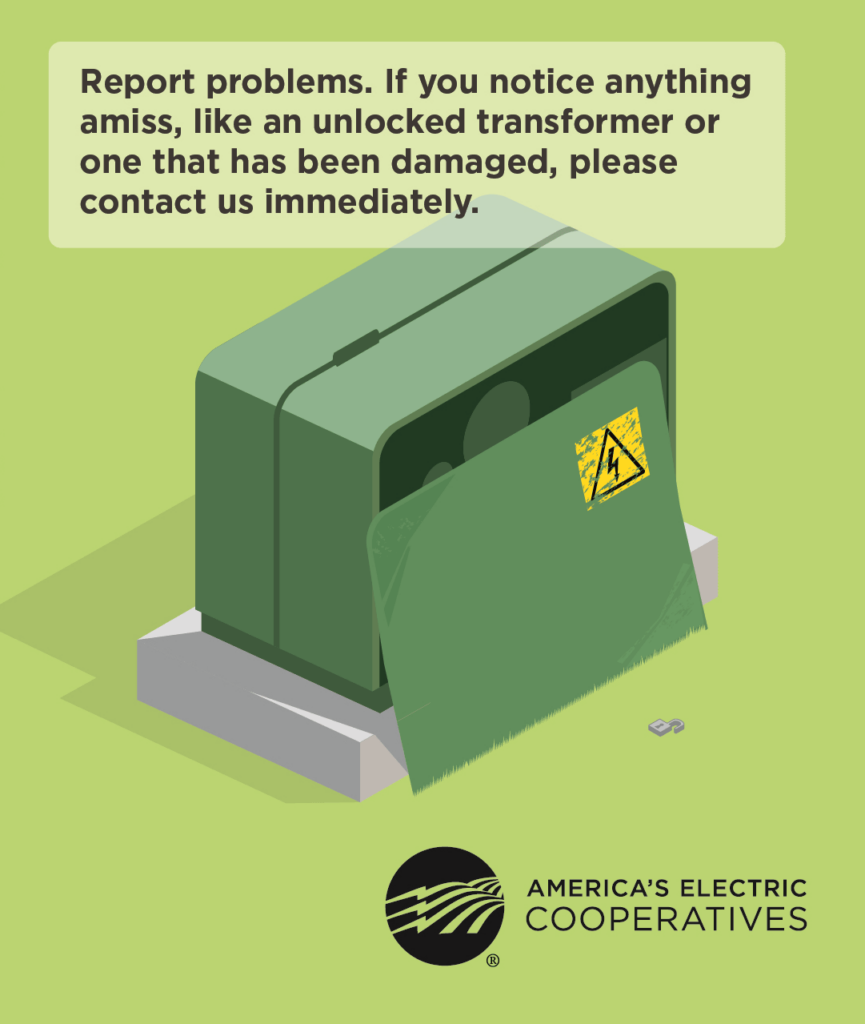What’s that green box in my yard?
So, what’s that green box in my yard? If you don’t have overhead power lines, you will see a green box, called a pad-mounted transformer, in your yard or the neighbor’s yard. Transformers change voltage from higher levels to a level people use in their homes for their electronics, appliances and lighting. Each of these transformers are vital to providing electricity to at least one home, but usually to several.
While overhead power lines are mounted on utility poles and substations are protected by security fences, pad-mounted transformers, switch boxes and pedestals are at ground level. Burying power lines reduces potential system damage from high winds and severe storms.

